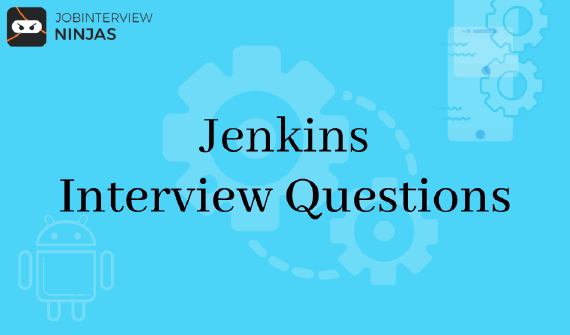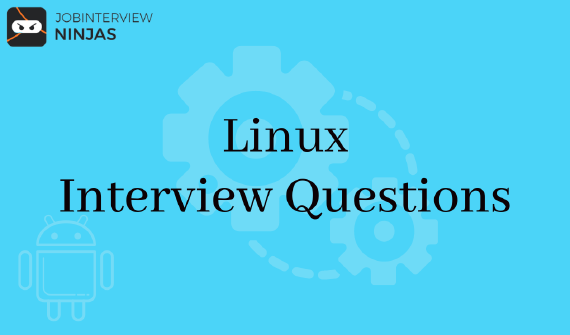
Top 40 Jenkins Interview Questions And Answers For Freshers/Experienced
If you are looking for a career in software development, then Jenkins is definitely worth exploring. This widely used …

MVC interview questions and answers are provided on this page to help the professionals and freshers to prepare for their job interviews. You can practice these top MVC Interview questions and clear your interview. Here on this page, we have covered all the Model-View-Controller interview questions which were often asked in the interview of big MNCs. On this page, you will find almost all the related questions of MVC.
About MVC: The Model-View-Controller (MVC) is a structured pattern that divides an application into three core components that are the model, the view, and the controller. As per their name, Each of these main components is built to manage particular development aspects of an application.
1. Define Model-View-Controller?
2. Explain Model-View-Controller that is represented in the MVC application?
3. Name the assembly to define the MVC framework
4. Name different return types of a controller action method
5. How do we differentiate between adding routes to an MVC application and a webform application?
6. Tell the two ways to add constraints to a route?
7. Tell some advantages of MVC?
8. Explain these functions “beforeFilter()”,”beforeRender()” and “afterFilter()” in Controller?
9. Explain the role of Abstraction, Presentation, and Control components in MVC?
10. Tell some drawbacks of the MVC model?
11. What do “ActionFilters” do in MVC?
12. Tell the stages of the execution of an MVC project?
13. Explain routing and its 3 segments?
14. Explain the process of routing in the MVC pattern?
15. How are you able to navigate from one view to other views by using a hyperlink?
16. Name the ways to maintain sessions in MVC?
17. Explain Temp data, View data, and View Bag?
18. Describe partial view in MVC?
19. Ways to implement Ajax in MVC?
20. Differentiate between “ActionResult” and “ViewResult”?
21. What class to use to send the result back in JSON format in MVC?
22. Tell us the difference between Partial View and View?
23. Name all types of results in MVC?
24. Why NonActionAttribute is important?
25. Explain the use of route {resource}.axd/{pathinfo}?
26. Tell the execution order of the filters, if multiple filters are implemented?
27. Tell the ASP.NET filters which are executed in the end?
28. Tell razor views file extensions?
29. Tell us the two ways for adding constraints to a route?
30. Tell us the two instances where routing is not required or implemented?
31. Tell some features of MVC?
32. Why were Bundling and minification introduced in MVC?
33. Differentiate between 3-tier Architecture and MVC Architecture?
35. Tell some important points to keep in mind while creating an MVC application?
36. Create a code in CodeIgniter?
37. Generate a web application both webforms and MVC?
38. Tell the attribute of assigning an alias name for ASP.NET Web API Action?
39. Explain the difference between MVC and WebAPI?
40. How does Web API returns JSON data only?
41. Differentiate between MVVM and MVC?
42. Discuss MVC in Angular.js?
43. Define methods in AngularJS Controller with the use of coding?
44. Create code using ng-model to display multi-line input control in AngularJS.
45. Show use of input elements via coding
47. What are the benefits of using PHP MVC Framework?
48. Name some PHP MVC frameworks?
49. State the steps to create the request object?
1. Define Model-View-Controller?
2. Explain Model-View-Controller that is represented in the MVC application?
3. Name the assembly to define the MVC framework
4. Name different return types of a controller action method
5. How do we differentiate between adding routes to an MVC application and a webform application?
6. Tell the two ways to add constraints to a route?
7. Tell some advantages of MVC?
8. Explain these functions “beforeFilter()”,”beforeRender()” and “afterFilter()” in Controller?
beforeFilter(): This function works in a controller before every action. It’s checking for an active session or checking user permissions.
beforeRender(): It is run after controller action logic, but before the view is rendered. Generally, this function is not used but If you are calling render() function manually before the end of a given action.
afterFilter(): After every controller action and after rendering is done this function is called.
9. Explain the role of Abstraction, Presentation, and Control components in MVC?
10. Tell some drawbacks of the MVC model?
11. What do “ActionFilters” do in MVC?
12. Tell the stages of the execution of an MVC project?
13. Explain routing and its 3 segments?
Routing helps in mapping the URL or URL structure with the Controller.
The three segments for routing are:
14. Explain the process of routing in the MVC pattern?
There are multiple routes or groups of routes collectively called the RouteCollection, which contains registered routes in the application. This RegisterRoutes method records the routes in the group. A route sets the URL pattern and uses a handler if a request matches the pattern.
The MapRoute first parameter is to name of the route. The second parameter is to define a pattern to which the URL matches. And the last i.e. third parameter is to place the default values if not determined.
Use the “ActionLink” method which makes a simple URL that navigates to the “Home” controller and raises the “GotoHome” action.
Collapse / Copy Code
<%= Html.ActionLink(“Home”, “Gotohome”) %>
16. Name the ways to maintain sessions in MVC?
17. Explain Temp data, View data, and View Bag?
Temp data: It maintains data during shifting from one controller to another controller.
View data: It maintains data during shifting from the controller to view.
View Bag: It’s a dynamic wrapper around view data.
18. Describe partial view in MVC?
19. Ways to implement Ajax in MVC?
20. Differentiate between “ActionResult” and “ViewResult”?
“ActionResult” is an abstract class whereas “ViewResult” is taken from the “AbstractResult” class. “ActionResult” has multiple derived classes such as “JsonResult”, “FileStreamResult” and “ViewResult”. “ActionResult” is best to derive different views dynamically.
Follow Simple Steps to apply in these MNC’s:
21. What class to use to send the result back in JSON format in MVC?
22. Tell us the difference between Partial View and View?
23. Name all types of results in MVC?
24. Why NonActionAttribute is important?
25. Explain the use of route {resource}.axd/{pathinfo}?
26. Tell the execution order of the filters, if multiple filters are implemented?
27. Tell the ASP.NET filters which are executed in the end?
28. Tell razor views file extensions?
29. Tell us the two ways for adding constraints to a route?
30. Tell us the two instances where routing is not required or implemented?
31. Tell some features of MVC?
32. Why were Bundling and minification introduced in MVC?
33. Differentiate between 3-tier Architecture and MVC Architecture?
Communication: 3-Tier architecture patterns don’t communicate directly with the data layer and in MVC Architecture All layers communicate directly using triangle topology
Usage: 3-tier is mostly used in web applications where the client, data tiers, and middleware works on physically separate platforms. In MVC it is used on applications that work on a single graphical workstation
35. Tell some important points to keep in mind while creating an MVC application?
36. Create a code in CodeIgniter?
37. Generate a web application both webforms and MVC?
Include the given MVC assembly references in the web forms application and a hybrid application is created.
System.Web.Mvc
System.Web.Razor
System.ComponentModel.DataAnnotations
38. Tell the attribute of assigning an alias name for ASP.NET Web API Action?
39. Explain the difference between MVC and WebAPI?
40. How does Web API returns JSON data only?
41. Differentiate between MVVM and MVC?
You may also prepare:
42. Discuss MVC in Angular.js?
43. Define methods in AngularJS Controller with the use of coding?
44. Create code using ng-model to display multi-line input control in AngularJS.
45. Show use of input elements via coding
47. What are the benefits of using PHP MVC Framework?
48. Name some PHP MVC frameworks?
CodeIgniter: It’s lightweight and very easy to understand. It has built libraries that help in creating websites and applications quickly. Users who have less knowledge of OOP programming can use this PHP MVC framework.
Kohana: It is a Hierarchical Model View Controller (HMVC) which is a safe, secure, and lightweight framework. It has good components which help in quickly developing applications.
CakePHP: It is recognized for its concepts like, software design patterns, convention over configuration, ActiveRecord, etc.
Zend: It is a strong framework that is totally secure, reliable, fast, and scalable. It supports Web 2.0 and the creation of web services.
It structures APIs from vendors like Amazon, Google, Flickr, Yahoo, etc. It’s perfect for developing business applications.
49. State the steps to create the request object?

If you are looking for a career in software development, then Jenkins is definitely worth exploring. This widely used …

In this post, we will cover a few Linux interview questions and their answers. So, let’s get started. In this …